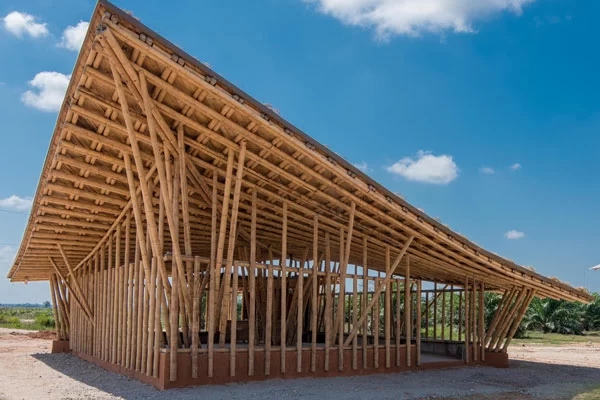
What properties does bamboo have that make it suitable for architecture?
Bamboo has technical qualities that make it appropriate for use in architecture, but it also has qualities that relate to people’s emotions and feelings, which is why it is currently used so frequently in this field.Technically speaking, bamboo may grow more than a metre every day and can be harvested without causing any damage to the plant. It is also a very fast-growing natural resource. Its growing rate makes it a very environmentally friendly building material, and in an era of “bigger, better, faster,” many people can relate to a building’s natural honesty.
Bamboo makes an excellent material for modular structural systems due to its strength and toughness. Bamboo’s strength in relation to its weight is analogous to steel’s behaviour. And it still looks and feels natural.

Why is bamboo used by architects these days so frequently?
With all the benefits modern technology brings to architecture, it also brings a lack of awareness of the natural resources. Many people, I believe, yearn for a particular imperfection in things—the kind you find in natural materials—because of the widespread use of computers and the perfection they provide. Another reason why people are drawn towards bamboo these days is that most of us are constantly surrounded by steel and glass. But when we see a building or structure, which is made of bamboo, we think about the natural environment, where it is built and that creates a certain campfire romanticism of being off the grid for a while.
What is it like working with bamboo compared to other materials?
When compared to other natural materials, bamboo requires a very different approach because it requires modular thinking. Because the culms’ diameter is constrained, the joints and how to combine similar elements to form a cohesive system—much like a bird’s nest—are given much greater attention. The structure, floor, wall, and cover are all made from the same replicated piece. The building’s complexity and how its users interact with it are very honestly depicted by the way the structure remains exposed. As a result, working with bamboo is quite individualised. Not having to worry about the cladding or the colour of the walls has also given us a certain amount of freedom and relief.
What is the current state of sustainable architecture in terms of efficiency and practicality?
Modern construction methods have advanced significantly in efficiency when compared to earlier ones. Reducing the consumption of fundamental utilities is how efficiency is achieved, and we think that’s what modern construction methods concentrate on.
And certainly, it is very doable, and we think that our governing body should make sustainability the standard. It is encouraging to see self-sustaining structures emerge as a result of deliberate design thought experiments.
